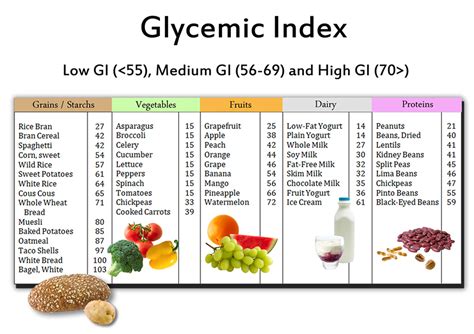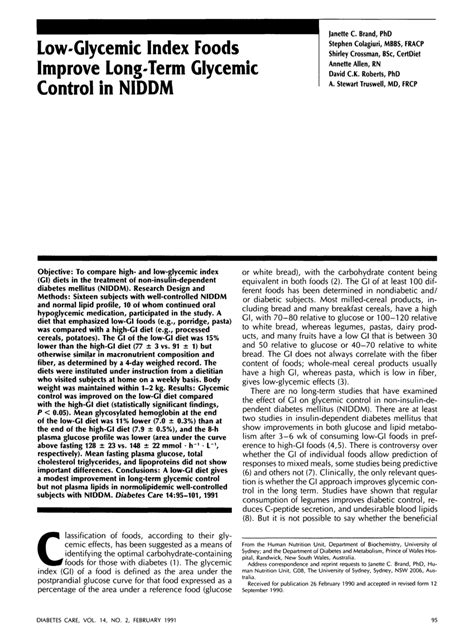givenchy index and type two diabetes | what is the glycemic index givenchy index and type two diabetes Statistical interaction for GI indicated a high RR for smaller cohort size for type 2 diabetes and total cardiovascular disease, whereas a larger cohort size for all-cause mortality. A high RR . Get the seven day forecast for Valletta, Malta, with temperature, precipitation, UV and wind information. See the hourly breakdown and the weather map .
0 · what is the glycemic index
1 · niddm low glycemic index
2 · low glycemic index for diabetics
3 · high glycemic index type 2 diabetes
4 · high glycemic index and diabetes
5 · glycemic load diabetes type 2
The Glenlivet 12 Year Old is a single malt scotch whisky with a smooth and fruity taste. This classic scotch is matured in traditional oak casks, followed by American casks to give it delicious notes of vanilla and a velvety finish.
In this short review, we examine evidence relating dietary glycemic index and glycemic load to type 2 diabetes incidence and the role of the form of dietary carbohydrate in the management of diabetes.
Statistical interaction for GI indicated a high RR for smaller cohort size for type 2 diabetes and total cardiovascular disease, whereas a larger cohort size for all-cause mortality. A high RR .In this short review, we examine evidence relating dietary glycemic index and glycemic load to type 2 diabetes incidence and the role of the form of dietary carbohydrate in the management of diabetes.Statistical interaction for GI indicated a high RR for smaller cohort size for type 2 diabetes and total cardiovascular disease, whereas a larger cohort size for all-cause mortality. A high RR was also observed for a shorter follow-up duration for type 2 diabetes, but a longer duration for total cardiovascular disease.We aimed to assess the associations between glycaemic index (GI) and glycaemic load (GL) and type 2 diabetes, cardiovascular disease, diabetes-related cancers, and all-cause mortality. Methods: We did a meta-analysis of large cohorts (≥100 000 participants) identified from the Richard Doll Consortium.
Glycemic index and glycemic load are dietary factors probably causal of type 2 diabetes and should be considered by future dietary guideline committees for inclusion in food and nutrient-based recommendations.The current analyses include data from an outlier showing far higher association between glycaemic index and type 2 diabetes than other studies, easily detected with influence analysis, further challenging the concept that the chosen cohorts provide consistent results.

what is the glycemic index
Published meta-analyses indicate significant but inconsistent incident type-2 diabetes (T2D)-dietary glycemic index (GI) and glycemic load (GL) risk ratios or risk relations (RR). It is now over a decade ago that a published meta-analysis used a predefined standard to identify valid studies. The ADA, WHO, and IHS guidelines recommend that adults be evaluated for type 2 diabetes if they are overweight (BMI ≥ 25 kg/m 2) and have one or more of the following risk factors: first-degree relative with diabetes, women who delivered a baby weighing > 9 lb, diagnosis of hypertension > 140/90 mmHg, diagnosis of polycystic ovarian syndrome .Background: The association between the glycaemic index and the glycaemic load with type 2 diabetes incidence is controversial. We aimed to evaluate this association in an international cohort with diverse glycaemic index and glycaemic load diets.
Metabolic surgery is a recommended treatment option for adults with type 2 diabetes and 1) a BMI ≥40.0 kg/m 2 (BMI ≥37.5 kg/m 2 in people of Asian ancestry) or 2) a BMI of 35.0–39.9 kg/m 2 (32.5–37.4 kg/m 2 in people of Asian ancestry) who do not achieve durable weight loss and improvement in comorbidities with reasonable nonsurgical .Research has shown that choosing low-GI foods can particularly help manage long-term blood glucose (HbA1c) levels in people with type 2 diabetes. There is less evidence to support this in people with type 1 diabetes, but we know that on a day-to-day basis choosing low GI foods can help keep blood glucose levels steady after eating.In this short review, we examine evidence relating dietary glycemic index and glycemic load to type 2 diabetes incidence and the role of the form of dietary carbohydrate in the management of diabetes.Statistical interaction for GI indicated a high RR for smaller cohort size for type 2 diabetes and total cardiovascular disease, whereas a larger cohort size for all-cause mortality. A high RR was also observed for a shorter follow-up duration for type 2 diabetes, but a longer duration for total cardiovascular disease.
We aimed to assess the associations between glycaemic index (GI) and glycaemic load (GL) and type 2 diabetes, cardiovascular disease, diabetes-related cancers, and all-cause mortality. Methods: We did a meta-analysis of large cohorts (≥100 000 participants) identified from the Richard Doll Consortium.
Glycemic index and glycemic load are dietary factors probably causal of type 2 diabetes and should be considered by future dietary guideline committees for inclusion in food and nutrient-based recommendations.The current analyses include data from an outlier showing far higher association between glycaemic index and type 2 diabetes than other studies, easily detected with influence analysis, further challenging the concept that the chosen cohorts provide consistent results. Published meta-analyses indicate significant but inconsistent incident type-2 diabetes (T2D)-dietary glycemic index (GI) and glycemic load (GL) risk ratios or risk relations (RR). It is now over a decade ago that a published meta-analysis used a predefined standard to identify valid studies. The ADA, WHO, and IHS guidelines recommend that adults be evaluated for type 2 diabetes if they are overweight (BMI ≥ 25 kg/m 2) and have one or more of the following risk factors: first-degree relative with diabetes, women who delivered a baby weighing > 9 lb, diagnosis of hypertension > 140/90 mmHg, diagnosis of polycystic ovarian syndrome .
Background: The association between the glycaemic index and the glycaemic load with type 2 diabetes incidence is controversial. We aimed to evaluate this association in an international cohort with diverse glycaemic index and glycaemic load diets.Metabolic surgery is a recommended treatment option for adults with type 2 diabetes and 1) a BMI ≥40.0 kg/m 2 (BMI ≥37.5 kg/m 2 in people of Asian ancestry) or 2) a BMI of 35.0–39.9 kg/m 2 (32.5–37.4 kg/m 2 in people of Asian ancestry) who do not achieve durable weight loss and improvement in comorbidities with reasonable nonsurgical .

niddm low glycemic index
This chocolate malted mousse combines crushed malted milk balls, chocolate malted milk powder, two kinds of melted chocolate, whipped cream and chocolate liqueur (we used Kahlua since we had that on hand) to make a sweet, rich and creamy chocolate mousse bottom layer.
givenchy index and type two diabetes|what is the glycemic index

























